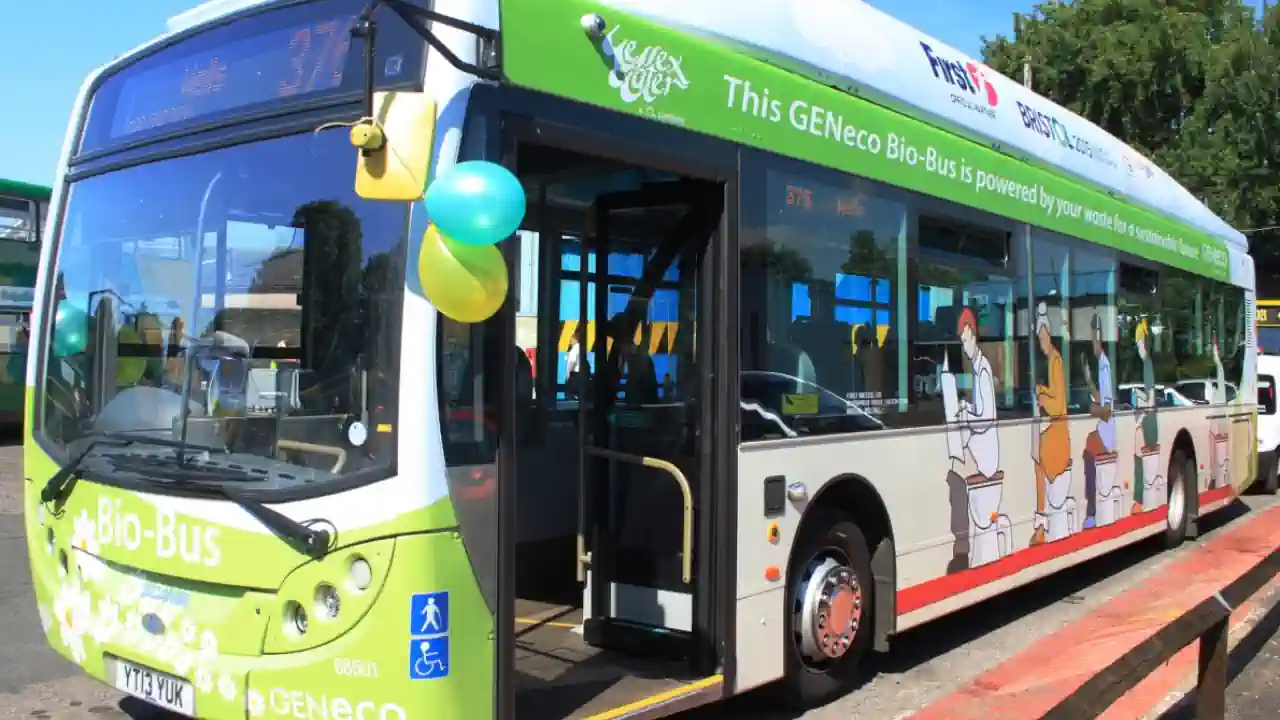Making biomethane from biogas is the biggest buzz in the Anaerobic Digestion Industry today. Globally there is great interest in creating biomethane because it is one of the only technologies available today which can provide a renewable energy supply for heavy vehicle use.
As the world transitions to a cleaner, more sustainable economic model biomethane has the potential to play a major role. It is a gas that is produced from organic materials that are broken down in an anaerobic (oxygen-free) environment in a biogas plant.
While better batteries are being developed, biomethane is ready to use now!
What is Biomethane Made from?
The feedstock for biomethane production can come from a variety of sources, including municipal solid waste, agricultural production, and organic industrial waste such as food waste.
What is Biomethane Best Used for?
Biomethane has many potential applications, but as a transportation fuel, it truly excels.
What is Most Biogas Best Used for?
Until 2017 biogas was mostly used to produce electricity. But that has changed. Since 2017 most new AD plants have been built with the ability to make biomethane. The result is that most biogas is now used to make biomethane.

How is Biomethane Made?
The most common way to produce biomethane is through the anaerobic digestion process, but it can also be made in methane gasification processes.
In such a process, organic material is heated until it breaks down into methane and carbon dioxide. The gas is then captured and can also be used to make biomethane to fuel vehicles, inject into the gas grid, and even be used in refineries to create oils and plastics.
6 Reasons Why It's a Hot Topic in the Press
The subject frequently makes headlines because:
- With the current high prices of vehicle fuel, it is cheaper than petrol and diesel
- The war in Ukraine has created such high prices for natural gas that energy companies and even major industrial nations such as Germany are crying out for it as a natural gas replacement
- Promised battery efficiencies, improved availability of EV batteries and higher energy density batteries have failed to arrive on the market, so many people in the HGV industry, and now also in the motor trade, see no viable alternative to using it as a transitional fuel instead of electricity
- By buying new biomethane-powered trucks, or converting existing vehicles, companies adopting biomethane love to be able to show their green credentials. They justifiably declare that their carbon emissions will drop, as will their polluting emissions which is great news for air quality on roads and in cities
- Every time a new biomethane plant is built or commissioned the construction companies and owners alike fervently announce their commitment to reducing carbon emissions and their contribution to combating climate change
- And, naturally, for a new and growing sector, there are many experts and consultants announcing their own reports on how this fuel is growing and the market is expanding.
The Limitations of Biomethane
But biomethane is not the magic solution to fuel shortages, at least not in the next few years:
- Not enough of it can be made, although many new biogas plants are in construction and planned
- there is a limit to the amount of organic waste which is available to make it
- if too much is made and food crops were used, food prices would rise and clearly, that must not happen.
In the remainder of this article, we look back at the important summer of 2017 which was the true dawn of this technology.
Looking back, 2017 was the year in which the substantial role in decarbonising transport that biomethane production can provide became apparent for the first time. The rest of this article is an archive version of our 2017 article, as follows:
Biomethane from Biogas – Developments Which Took Place in 2017
In particular, on 27 July 2017, ADBA came out strongly in support of biomethane from biogas, in the original article summarised below: (Note: We have added additional articles which follow, which also make very much the same point.)
Renewable Methane must be central to Clean Air Strategy – ADBA – Oxford Prospect
 Image: Bio-Gas bus
Image: Bio-Gas busBiomethane is a low-carbon transport fuel produced by anaerobic digestion (AD), producing biomethane from biogas is a natural process that breaks down organic wastes and purpose-grown crops to create a biogas that can then be upgraded to create a methane-based fuel.
The UK AD industry has sufficient capacity today to produce enough of it to power the UK’s entire bus fleet, and the use of biomethane for buses and HGVs has increased in recent years in response to concerns over the cost of fossil-fuel-based fuels and their negative impact on air quality and greenhouse gas emissions.
In May, Nottingham City Transport’s unveiled a new £17m double-deck ‘Bio-Gas’ bus fleet, the largest of its kind in the world.
ADBA’s call to arms comes as the Department for Environment, Food and Rural Affairs (DEFRA) has today published its plan to deliver nitrogen dioxide compliance in UK towns and cities, part of a wider Clean Air Strategy due to be published in 2018. via Biomethane must be central to Clean Air Strategy – ADBA – Oxford Prospect
However, in just these last 30 days there have been many other news stories which show just how fast biogas plants, which produce biomethane from biogas, are becoming more than just raw biogas producers coupled with electrical power generators which deliver power 24/7 into power grids.
To make this point we have included a summary of a selection of those articles that interested us most. See below:
Tata Motors develops country’s first biomethane bus
Tata Motors has developed the country’s first Bio-CNG (bio-methane) bus which was unveiled recently at a bio-energy programme, ‘Urja Utsav’. The firm, which is India’s largest commercial vehicles manufacturer, said the bio-methane engines could be used in LCV, ICV and MCV buses.

At the Urja Utsav held in Pune’s Shiv Chhatrapati Sports Complex, Tata displayed three engines, along with the lead model — Tata LPO 1613 with 5.7 SGI NA BS-IV IOBD-II compliant bus.
The event, which was organised by the government, was attended by the Minister of State (Independent) for the Ministry of Petroleum and Natural Gas Dharmendra Pradhan and MoS (Independent) for Power, Coal, New and Renewable Energy and Mines Piyush Goyal.
“The use of Bio-CNG will contribute in a positive manner to the Smart Cities proposition of keeping them clean and is a good option for wet garbage management,” Head of Commercial Vehicles Business at Tata Motors, Girish Wagh, said in a statement.
via Tata Motors develops country’s first biomethane bus
Waitrose (UK Supermarket Chain) to cut carbon footprint with more biomethane (RNG) trucks
Waitrose has committed to quadrupling its number of biomethane lorries by the end of the year after finding they cut carbon dioxide emissions by more than 80%.

The retailer is set to take its fleet of RNG trucks from 12 to 49 in the next five months to cut back on its carbon footprint.
The lorries, which are currently used in the Midlands and northern England, have a range of up to 500 miles on a full tank.
The commitment came after a study by UK gas network Cadent found biomethane trucks emitted 84% less carbon dioxide than equivalent diesel vehicles. The fuel also emits 99% fewer nitrogen oxides.
The 14-month analysis of gas-powered vehicles filling up at a specialist station in Leyland, Lancashire – including Waitrose lorries – recommended compressed renewable natural gas should be the “fuel of choice for HGVs in the future”. via Waitrose to cut carbon footprint with more biomethane trucks
Biomethane Market to Record Impressive Growth by 2025
The global biomethane market is on a growth trajectory mainly due to the green gas characteristic of biomethane. It is produced by the natural breakdown of organic matter, which includes agricultural waste, green waste, household waste, food industry waste, and even industrial waste. The process involves the disintegration of organic material in an anaerobic environment to produce biogas, which is further purified to produce biomethane.
 A significant factor fuelling the growth of the market in this renewable fuel is the high potential usage of it in the automotive and power generation sector.
A significant factor fuelling the growth of the market in this renewable fuel is the high potential usage of it in the automotive and power generation sector.
The developed countries of the world are increasingly diversifying conventional energy production practices to include renewable sources for energy needs.
The recently concluded Climate Change Conference in Paris has led many countries to include more renewables and cleaner fuels for energy production. In particular, the European countries have set targets to increase the share of renewable energy to 20% by 2020 and to increase it to 80% by 20250 in the energy mix.
A report by Transparency Market Research forecasts the global biomethane market to reach a valuation of US$2,624.5 mn by 2025 increasing from US$1,485.4 mn in 2016 at a CAGR of 6.7% between 2017 and 2025. via Market to Record Impressive Growth by 2025
Biomethane at Heart of UK Study of Low-emission Vehicles in Heavy-duty Cycles
Cenex, the UK’s first Centre of Excellence for low-carbon technologies, says global logistics provider Kuehne + Nagel Ltd will trial the effectiveness of low-emissions heavy-goods vehicles (HGVs) operating as parts of large fleets with demanding-duty cycles. The vehicles to be tested are powered by liquefied renewable natural gas (RNG).
Funded in part by Innovate UK’s Low-Emission Freight and Logistics Project, the Reduced-Emission Logistics (RED-E-LOG) trial will see:
- one of the UK’s largest fleet operators trialling the effectiveness of dedicated (spark-ignited) gas, and
- dual-fuel direct injection methane-diesel trucks in completing demanding-duty cycles.
They will be doing this for consumer brands such as Whitbread, owner of Costa Coffee and Premier Inn, and Virgin. via Biomethane at Heart of UK Study of Low-emission Vehicles in Heavy-duty Cycles | NGV Global
So, it's been quite a month for biomethane!
There has also been:
- Pressure on a major government to prioritize its production, in preference to using biogas to make electricity,
- Major global companies like Tata and a large UK Supermarket chain voting for biomethane from biogas right now, by making their own real investment in the technology
- Expert Studies have once again shown the benefits to the transport sector of using it as the fuel of choice, and finally:
- A report has been published which said that the market sector will record Impressive growth by 2025.
Conclusion
The wise investor will do well to consider investing in biomethane from biogas as a fuel of the future in which today's start-up companies may become tomorrow's corporate giants!
Attribution for the featured image at top of this page: Geof Sheppard, CC BY-SA 4.0, via Wikimedia Commons.



Hello, Neat post. My question is. How do you deal with solids/scum build up and how frequently does the system need to be cleaned out?
I saw this headline, and thought it interesting but it is out of date now. Can you not make it clearer that the title refers of 18 months back and is hardly now what I would call news.
Kendrick: Your comment was noted, and we have updated the title. Thanks for the heads-up.
Biomethane is again the fastest growing part of the biogas scene. Pl. suggest best use for the biomethane for the spanish biogas maker.